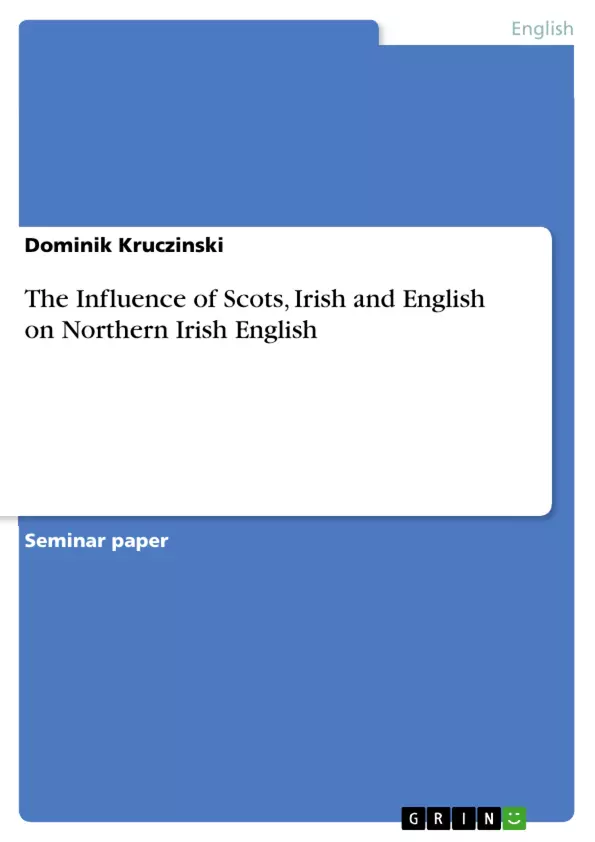There is an undeniable connection between modern Northern Irish English and the history of the northern part of Ireland and its different languages. And so, the paper focuses on analysing and finding out how important the historical languages of Scots, Irish and Old English were for the shaping of what is now also called ‘Ulster English’.
On the following pages we will examine how important the interactions between Scots, Irish and English were for modern Northern Irish English with a focus on analysing the Northern Irish lexicon and the origin of lexis it contains.
A slight reference will also be made to Phonetics and Phonology to additionally confirm the thesis that all the three historical languages have a crucial impact on modern Northern Irish English. An insight in Northern Irish history will lay the foundation of why there is such an importance of a linguistic exchange in that special part of the country. Combining these different aspects will give an answer to the question if the influence of the language exchange in Northern Ireland can still be noticed today. Furthermore, this paper will explain how Scots, Irish and Old English interactions make themselves noticeable in Northern Irish English and to what extent.
Table of Contents
- Introduction
- History of the English Language in Northern Ireland
- Prior to the 12th century
- Late 12th century - Early 17th century
- Since early 17th century
- The Different Dialects in Northern Ireland
- The Main Linguistic Features of Northern Irish English
- Phonetics and Phonology
- The Lexicon
- History of Lexicography in Northern Ireland
- Origin of Lexis in Northern Irish English
- Conclusion
Objectives and Key Themes
This paper aims to analyze the characteristics of Northern Irish English (NIE) in comparison to Standard English, focusing on the unique linguistic features of NIE, particularly in lexicology. The paper investigates the influence of Scots, Irish, and Old English on the development of NIE, also known as "Ulster English".
- The historical interaction of Scots, Irish, and English in shaping NIE.
- The impact of these languages on the Northern Irish lexicon.
- The role of phonetics and phonology in confirming the influence of historical languages.
- The historical context of language exchange in Northern Ireland.
- The extent to which the influence of these languages can be observed in modern NIE.
Chapter Summaries
The introduction establishes the paper's focus on analyzing the unique linguistic features of Northern Irish English, particularly in lexicology, and highlights the influence of Scots, Irish, and Old English on its development.
Chapter 2 explores the history of the English language in Northern Ireland, outlining the pre-12th century dominance of the Irish language, the arrival of Anglo-Norman, medieval English, and Welsh in the late 12th century, and the subsequent establishment of English as the dominant language in the early 17th century through plantation settlements.
Chapter 3 discusses the diverse dialects spoken in Northern Ireland, highlighting the influence of geographical location and contact with other languages. It emphasizes the term "Ulster English" to encompass this variety of dialects.
Chapter 4 delves into the main linguistic features of Northern Irish English, exploring the phonetics and phonology of the language and analyzing the lexicon, including the history of lexicography in Northern Ireland and the origins of lexis in Northern Irish English.
Keywords
The paper focuses on the key terms and concepts related to the development and characteristics of Northern Irish English, including "Ulster English," Scots, Irish, Old English, lexicon, phonetics, phonology, historical linguistics, and language contact.
- Quote paper
- Dominik Kruczinski (Author), 2018, The Influence of Scots, Irish and English on Northern Irish English, Munich, GRIN Verlag, https://www.grin.com/document/1224584



